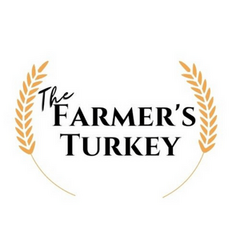Happy National Pork Month!

National Pork Month
Cooking Tips, Heritage Breeds, and Flavor You’ll Love
Happy National Pork Month! Fall is such an exciting season of transition — pumpkins on the porch, cozy flavors in the kitchen, and comfort food taking center stage. To me, pork fits perfectly with the fall vibes that have taken over both my mind and my house décor.
Apple cider brined pork loin. Sweet potatoes paired with grilled pork chops. A cozy pulled pork crockpot dish on a chilly evening. Doesn’t that sound like fall on a plate?
I’ll admit, I grew up on a “strictly beef” diet (just kidding… kinda), but as an adult I’ve discovered just how versatile and delicious pork can be. This year, a few new pork recipes are on my fall bucket list, so keep an eye out for those cooking videos on our social media platforms!
A few fun facts to kick things off…
- Pork is the most widely consumed protein in the world.
- Pork has excellent byproducts that go beyond the plate, including medicines like insulin.
- Salt pork was a staple for Washington’s troops at Valley Forge during the winter of 1776–1777.
What is Heritage Pork?
When browsing ChopLocal, you may notice several vendors offering heritage pork. If you’re not familiar with the term, it’s simple: heritage pork comes from purebred animals with a long history of careful breeding. Popular heritage breeds include Berkshire, Mangalitsa, and Duroc.
Why does this matter? In the 1990s, the pork industry shifted toward leaner cuts, but heritage breeds stayed true to the original qualities that made pork flavorful in the first place.
Heritage pork stands out for several reasons. It often has a darker color and more intramuscular marbling, which creates richer flavor and a more tender bite. The breeds themselves also play a big role — heritage lines like Berkshire, Mangalitsa, and Duroc have been carefully raised for generations, each offering their own unique qualities to the plate.
Learn more about Duroc Pork and Mangalista Pork
How to Cook Pork
Cooking pork at home doesn’t have to be intimidating — in fact, it’s one of the most versatile proteins you can work with. Here are a few simple tips that make all the difference:
Cook Temperature – Forget the old “well-done only” rule. Pork is safe (and delicious) when cooked to an internal temperature of 145°F with a 3-minute rest. That means it’s perfectly fine if your pork is slightly pink in the center — in fact, that’s how you’ll keep it juicy.
Thickness Matters – Thinner chops cook quickly and can dry out just as fast. Keep a close eye on the pan, or better yet, brine thinner cuts to lock in moisture. For thicker chops, use a meat thermometer to get the perfect doneness without overcooking.
Enhancing Flavor – Heritage pork is flavorful on its own, but you can elevate it with a good marinade, spice rub, or even just a sprinkle of salt and pepper. Because these cuts have more marbling, simple seasonings often shine the brightest.
Cuts to Explore – Don’t stop at pork chops! Try a slow-braised shoulder, fall-off-the-bone ribs, tender pork tenderloin, or ground pork for weeknight favorites like meatballs, tacos, and stir-fries. Exploring different cuts lets you appreciate the full range of what pork has to offer.
Click Here for a simple and delicious pork chops recipe!
Why Shop Pork on ChopLocal?
ChopLocal offers access to pork you can’t always find at the grocery store — from Berkshire pork chops to Mangalitsa roasts. Skip the middleman and connect directly with farmers and butchers. Ordering online makes it easy to enjoy premium pork delivered right to your door.
National Pork Month is the perfect excuse to try something new in the kitchen while pulling out some tried and true pork dishes. From juicy chops to slow-braised shoulders, pork proves again and again why it’s one of the most versatile proteins.

